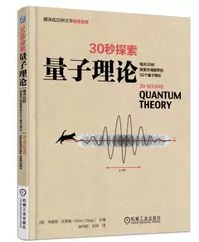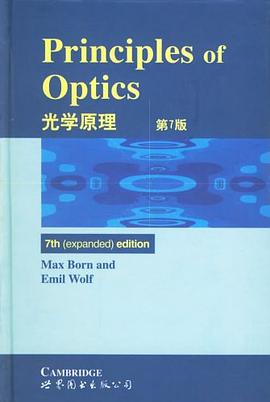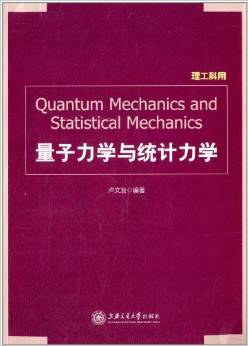

具体描述
《计算物理(第2版)》是计算物理领域的一本优秀教材。它紧扣一些非常基本但难以解析求解的物理问题逐步展开,围绕各个物理学专题介绍了物理学研究中各种基本的计算机数值模拟方法,深入浅出地讨论其理论基础和实际应用,着重于解决实际物理问题的基本数值方法。这样可以使读者通过学习,对物理学中应用的主要计算技术有一个全面的了解,从而具有利用计算机进行数值计算解决复杂体系物理问题的能力。
作者简介
目录信息
preface
about the authors
1 a first numerical problem
1.1 radioactive decay
1.2 a numerical approach
1.3 design and construction of a working program:codes and pse docodes
1.4 testing your program
1.5 numerical considerations
1.6 programming guidelines and philosophy
2 realistic projectile motion
2.1 bicycle racing:the effect of air resistance
2.2 projectile motion:the trajectory of a cannon shell
2.3 baseball:motion of a batted ball
2.4 throwing a baseball:the effects of spin
2.5 golf
3 oscillatory motion and chaos
3.1 simple harmonic motion
3.2 making the pendulum more interesting:adding dissipation, nonlinearity, and a driving force
3.3 chaos in the driven nonlinear pendulum
3.4 routes to chaos:period doubling
. 3.5 the logistic map:why the period doubles
3.6 the lorenz model
3.7 the billiard problem
3.8 behavior in the frequency domain:chaos and noise
4 the solar system
4.1 kepler's laws
4.2 the inverse-square law and the stability of planetary orbits
4.3 precession of the perihelion of mercury
4.4 the three-body problem and the effect of jupiter on earth
4.5 resonances in the solar system:kirkwood gaps and planetary rings
4.6 chaotic tumbling of hyperion
5 potentials and fields
5.1 electric potentials and fields:laplace's equation
5.2 potentials and fields near electric charges
5.3 magnetic field produced by a current
5.4 magnetic field of a solenoid:inside and out
6 waves
6.1 waves:the ideal case
6.2 frequency spectrum of waves on a string
6.3 motion of a(somewhat)realistic string
6.4 waves on a string(again):spectral methods
7 random systems
7.1 why perform simulations of random processes?
7.2 random walks
7.3 self-avoiding walks
7.4 random walks and diffusion
7.5 diffusion, entropy, and the arrow of time
7.6 cluster growth models
7.7 fractal dimensionalities of curves
7.8 percolation
7.9 diffusion on fractals
8 statistical mechanics, phase transitions, and the ising model
8.1 the ising model and statistical mechanics
8.2 mean field theory
8.3 the monte carlo method
8.4 the ising model and second-order phase transitions
8.5 first-order phase transitions
8.6 scaling
9 molecular dynamics
9.1 introduction to the method:properties of a dilute gas
9.2 the melting transition
9.3 equipartition and the fermi-pasta-ulam problem
10 quantum mechanics
10.1 time-independent schrsdinger equation:some preliminaries
10.2 one dimension:shooting and matching methods
10.3 a matrix approach
10.4 a variational approach
10.5 time-dependent schr6dinger equation:direct solutions
10.6 time-dependent schr6dinger equation in two dimensions
10.7 spectral methods
11 vibrations,waves,and the physics of musical instruments
12 interdisciplinary topics
appendices
a ordinary differential equations with initial values
b root finding and optimization
c the fourier transform
d fitting data to a function
e numerical integration
f generation of random numbers
g statistical tests of hypotheses
h solving linear systems
index
· · · · · · (收起)
about the authors
1 a first numerical problem
1.1 radioactive decay
1.2 a numerical approach
1.3 design and construction of a working program:codes and pse docodes
1.4 testing your program
1.5 numerical considerations
1.6 programming guidelines and philosophy
2 realistic projectile motion
2.1 bicycle racing:the effect of air resistance
2.2 projectile motion:the trajectory of a cannon shell
2.3 baseball:motion of a batted ball
2.4 throwing a baseball:the effects of spin
2.5 golf
3 oscillatory motion and chaos
3.1 simple harmonic motion
3.2 making the pendulum more interesting:adding dissipation, nonlinearity, and a driving force
3.3 chaos in the driven nonlinear pendulum
3.4 routes to chaos:period doubling
. 3.5 the logistic map:why the period doubles
3.6 the lorenz model
3.7 the billiard problem
3.8 behavior in the frequency domain:chaos and noise
4 the solar system
4.1 kepler's laws
4.2 the inverse-square law and the stability of planetary orbits
4.3 precession of the perihelion of mercury
4.4 the three-body problem and the effect of jupiter on earth
4.5 resonances in the solar system:kirkwood gaps and planetary rings
4.6 chaotic tumbling of hyperion
5 potentials and fields
5.1 electric potentials and fields:laplace's equation
5.2 potentials and fields near electric charges
5.3 magnetic field produced by a current
5.4 magnetic field of a solenoid:inside and out
6 waves
6.1 waves:the ideal case
6.2 frequency spectrum of waves on a string
6.3 motion of a(somewhat)realistic string
6.4 waves on a string(again):spectral methods
7 random systems
7.1 why perform simulations of random processes?
7.2 random walks
7.3 self-avoiding walks
7.4 random walks and diffusion
7.5 diffusion, entropy, and the arrow of time
7.6 cluster growth models
7.7 fractal dimensionalities of curves
7.8 percolation
7.9 diffusion on fractals
8 statistical mechanics, phase transitions, and the ising model
8.1 the ising model and statistical mechanics
8.2 mean field theory
8.3 the monte carlo method
8.4 the ising model and second-order phase transitions
8.5 first-order phase transitions
8.6 scaling
9 molecular dynamics
9.1 introduction to the method:properties of a dilute gas
9.2 the melting transition
9.3 equipartition and the fermi-pasta-ulam problem
10 quantum mechanics
10.1 time-independent schrsdinger equation:some preliminaries
10.2 one dimension:shooting and matching methods
10.3 a matrix approach
10.4 a variational approach
10.5 time-dependent schr6dinger equation:direct solutions
10.6 time-dependent schr6dinger equation in two dimensions
10.7 spectral methods
11 vibrations,waves,and the physics of musical instruments
12 interdisciplinary topics
appendices
a ordinary differential equations with initial values
b root finding and optimization
c the fourier transform
d fitting data to a function
e numerical integration
f generation of random numbers
g statistical tests of hypotheses
h solving linear systems
index
· · · · · · (收起)
读后感
评分
评分
评分
评分
评分
用户评价
评分
计算物理我估计还得重学一边,我可怜的计算机水平啊(掩面)……
评分大二尾声。那时的我已经接近死亡。各种隔靴搔痒已经完全失去作用。
评分大二尾声。那时的我已经接近死亡。各种隔靴搔痒已经完全失去作用。
评分不错的入门教材,毕竟计算物理和数值计算之间有很大的重合部分。但是感觉还是略简单,缺少前沿的内容。这可能也和书比较老的的缘故。
评分大二尾声。那时的我已经接近死亡。各种隔靴搔痒已经完全失去作用。
相关图书
本站所有内容均为互联网搜索引擎提供的公开搜索信息,本站不存储任何数据与内容,任何内容与数据均与本站无关,如有需要请联系相关搜索引擎包括但不限于百度,google,bing,sogou 等
© 2025 book.wenda123.org All Rights Reserved. 图书目录大全 版权所有




















